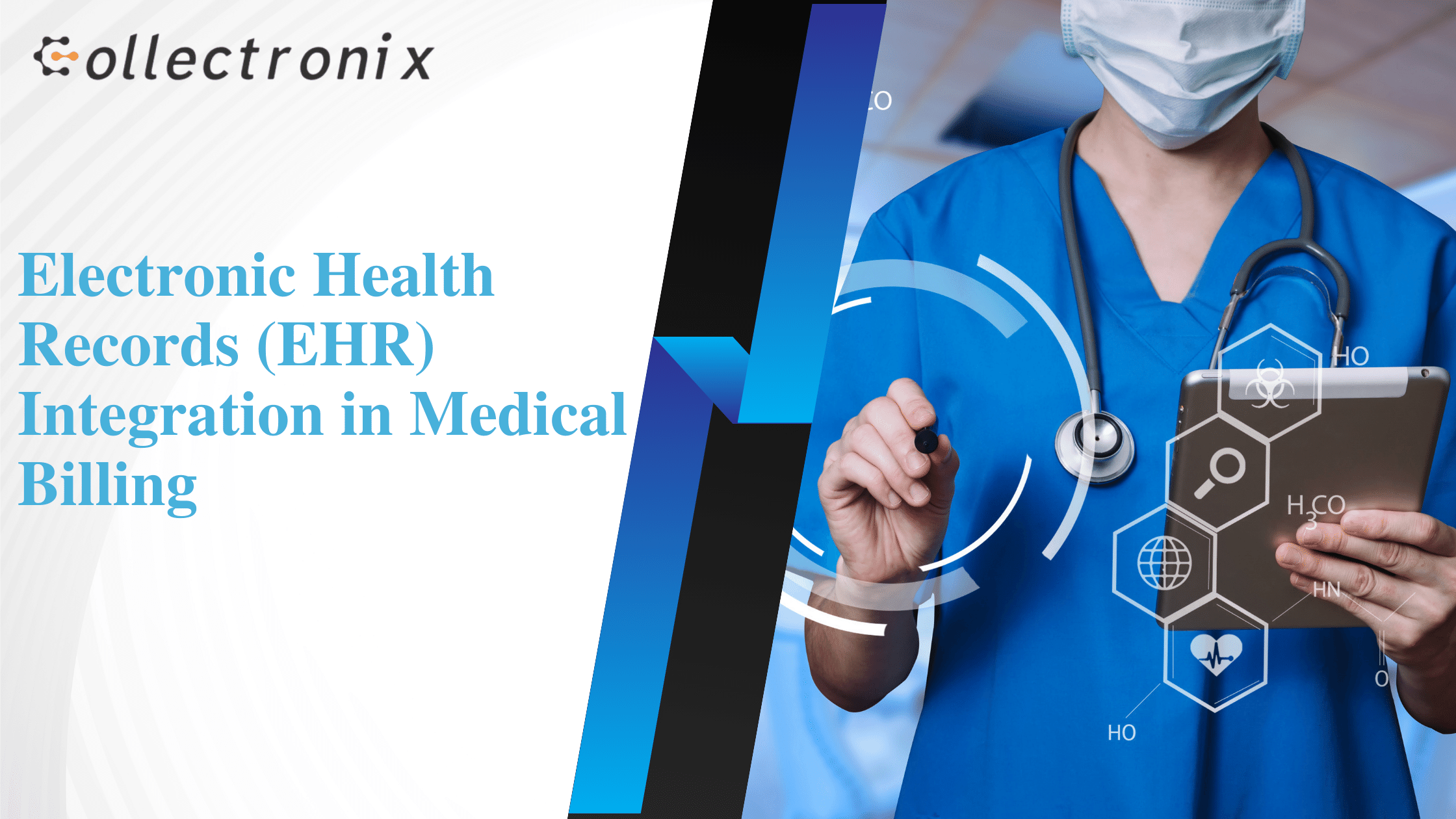Electronic Health Records (EHR) Integration in Medical Billing
Integration of EHR in Medical Billing is an important advancement in healthcare technology. EHR systems keep patients’ entire health records in digital format and are shared among different healthcare settings. Integration of EHR in Medical Billing is a process that ensures that medical records are directly linked to billing processes that improve efficiency as well as accuracy. It also creates more effective workflows.
Types of Integration of EHR in Medical Billing
Direct Integration:
It’s an integrated link between the EHR and billing system, which is usually within an identical framework of software. This type of system allows for real-time data sharing and eliminates the necessity of manually entering data.
Interfaced Integration:
In this case, the unique EHR and the billing system exchange data through intermediaries or interfaces. Although it isn’t as seamless as direct integration, it permits the exchange of information between the two systems, eliminating the need to duplicate work.
Cloud-Based Integration:
Each EHR, as with billing information, is stored on cloud storage, which permits ease of access and sharing of information across various places. This type allows for scalability as well as remote accessibility.
Modular Integration:
Certain modules of specific modules of the EHR system are integrated into the billing program. For instance, the scheduling module can be connected to billing to warrant the accuracy of billing related to visits of patients.
Benefits of Integration of EHR in Medical Billing
Enhanced Accuracy and Reduced Errors:
- EHR integration decreases the need for manual entry of information, thereby reducing the risk of making mistakes with the entry of billing and insurance data.
- The correct billing data will ensure that the process of processing claims is completed correctly, thereby reducing the chance of denials and delays.
Improved Efficiency:
- The automatic transfer of data between EHR and billing software accelerates bill processing.
- Healthcare professionals can quickly create invoices, submit claims, and track the status of payments, resulting in faster revenues.
Comprehensive Patient Information:
- EHR systems offer a complete review of the patient’s medical history and warrant that billing is based on full and accurate medical information.
- This vast data set ensures an accurate billing system and will allow a fair and reasonable payment for services offered.
Regulatory Compliance:
- Integration of EHR in Medical Billing enables healthcare providers to abide by rules like the Health Insurance Portability and Accountability Act (HIPAA) by ensuring that they can utilize the same secure and standardized processing of patient information.
- The integrated systems facilitate compliance to billing and codes which reduces the risk of audits and penalties.
Data Analytics and Reporting:
- Integrated EHRs and billing systems can provide advanced analytics of data that grant details on the demographics of patients’ financial performance and the results of treatment.
- These types of data can assist in making decisions and optimizing the use of resources. It also improves the overall quality of healthcare.
Challenges of EHR Integration
Integration of EHR in Medical Billing software can present several issues. The most significant obstacle is the cost. The integration of the two systems involves significant expenditure in software, hardware, and training, which could be a major issue for smaller health facilities. In addition, complex integration can be another problem. Integration between different systems is complex and requires specialized talent and expertise. Interoperability between different EHR and billing systems is essential for seamless integration.
Security and privacy concerns about data could also be a problem. Securely protecting sensitive patient data is essential and integrated systems should be equipped with strong security measures to safeguard against data breaches and unauthorised access. Compliance with privacy regulations is crucial in the course of integration. Training and adaptation aren’t an easy task. Employees might require intensive instruction to be able to handle the new workflows as well as integrated systems. Resistance to change is an issue that needs effective methods to manage changes.
Best Practices for EHR Integration
- The uniformization of practices for data entry in all hospitals guarantees reliability and consistency in the information recorded. This eliminates confusion and improves the quality of billing information.
- A comprehensive training program for health professionals and administrative staff in an integrated EHR, as well as billing and coding software is essential. Thorough training will ensure that users are proficient with the software and with the capabilities effectively.
- Making sure you keep your EHR and billing system updated with the latest software and security updates is essential. Regular maintenance will warrant the security and reliability of your system as well as adding new functions that raise capabilities.
- Implement steps to secure your information to protect sensitive patient information. Compliance with HIPAA regulations and extra privacy laws is crucial to ensure the confidentiality and integrity of medical records.
Conclusion
In the final analysis, EHR integration in medical billing is crucial for the current medical practices that aim to boost efficiency, in terms of accuracy and efficiency. Collectronix’s broad variety of solutions and commitment to innovation allow healthcare providers to manage the complexities of the administration of healthcare efficiently and confidently. By taking advantage of the integration of precise methods and utilizing modern technologies, healthcare professionals can effectively fulfil constant growth and provide high-quality healthcare services to their patients.

